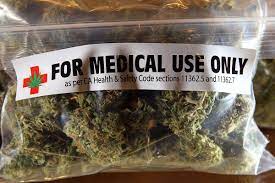Chronic pain is a daily battle for millions worldwide. Traditional treatments often come with baggage—side effects and risks that make the fight even harder. But amidst this struggle, a green beacon of hope has emerged: medical marijuana. Let's delve into how its legalization is reshaping chronic pain management.

Table of Contents
| Sr# | Headings |
|---|---|
| 1 | What is Medical Marijuana? |
| 2 | Understanding Chronic Pain |
| 3 | The Endocannabinoid System |
| 4 | How Medical Marijuana Works |
| 5 | Different Forms of Consumption |
| 6 | Research Backing Medical Marijuana |
| 7 | Challenges and Concerns |
| 8 | Seeking Professional Guidance |
| 9 | The Future of Chronic Pain Management |
| 10 | FAQs |
What is Medical Marijuana?
Medical marijuana isn't your regular joint for recreational highs. It's cannabis used for therapeutic purposes, carefully dosed and administered to alleviate symptoms, especially chronic pain.
Understanding Chronic Pain
Chronic pain isn't just a discomfort; it's a relentless foe, impacting physical and mental well-being. From neuropathic pain to arthritis, its effects can be debilitating.

The Endocannabinoid System
Ever heard of your body's in-built cannabis network? That's the endocannabinoid system (ECS), regulating various functions like pain, mood, and appetite. Medical marijuana interacts with this system, offering relief.
How Medical Marijuana Works
Picture medical marijuana as a gentle whisper calming a storm within your body. Its cannabinoids bind to ECS receptors, dialing down pain signals and reducing inflammation, offering respite from the relentless ache.
Different Forms of Consumption
Medical marijuana isn't just limited to rolling a joint. From oils to edibles, there are various consumption methods catering to different preferences and medical needs.

Research Backing Medical Marijuana
The science speaks volumes. Studies reveal medical marijuana's prowess in managing chronic pain, with significant reductions in pain intensity and improvements in overall quality of life.
Challenges and Concerns
However, it's not all sunshine and rainbows. The lack of regulation in the medical marijuana industry raises concerns about product quality and consistency. Moreover, societal stigma can be a roadblock to access and acceptance.
Seeking Professional Guidance
Navigating the maze of medical marijuana isn't a solo journey. It's crucial to consult healthcare providers well-versed in its nuances to ensure safe and effective usage tailored to individual needs.

The Future of Chronic Pain Management
As medical marijuana gains traction, the landscape of chronic pain management is evolving. With ongoing research and increasing acceptance, it holds promise as a vital tool in the fight against chronic pain.
FAQs
- Is medical marijuana legal everywhere?
- Medical marijuana laws vary, so always check local regulations before use. Stay informed!
- What are the potential side effects of using medical marijuana for chronic pain?
- Common side effects include dizziness and dry mouth. Discuss potential effects with your healthcare provider.
- Can medical marijuana be used in combination with other pain medications?
- It can, but be cautious of interactions. Always consult your healthcare provider before combining medications.
- How do I find a healthcare provider knowledgeable about medical marijuana?
- Seek recommendations, research online, and ask questions during appointments to find a provider who understands your needs.
- What does the future hold for medical marijuana in chronic pain management?
- With ongoing research and growing acceptance, the future looks promising. Stay tuned for advancements in this field!
In conclusion, the legalization of medical marijuana opens doors to new possibilities in chronic pain management. While challenges exist, the potential benefits make it a beacon of hope for those battling persistent pain.
